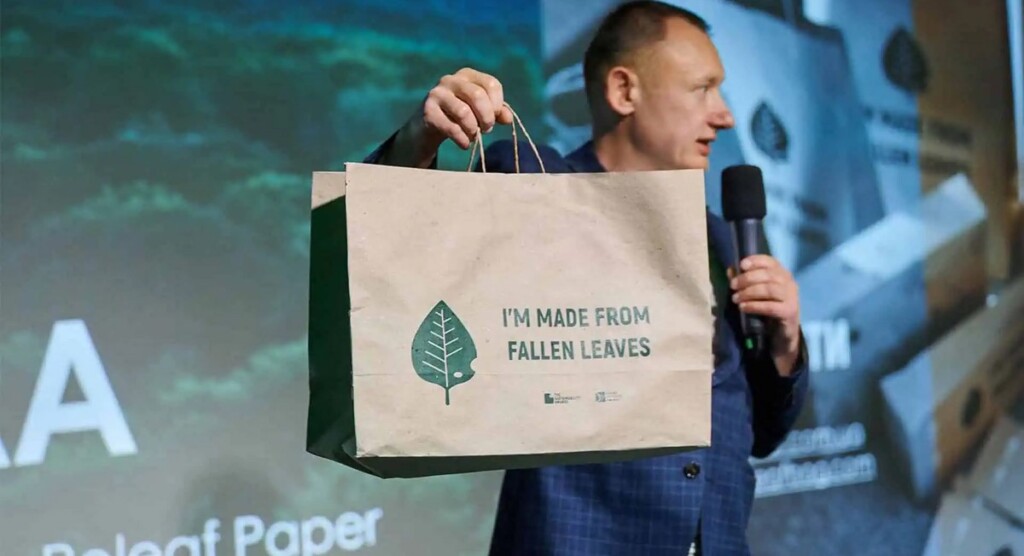
Businesses like to talk about the concept of a closed loop or circular economy, but often they’re trying to close small loops. Releaf Paper takes dead leaves from city trees and turns them into paper for bags, office supplies, and more—which is to say they are striving to close one heck of a big loop.
How big? Six billion trees are cut down every year for paper products according to the WWF, producing everything from toilet paper to Amazon boxes to the latest best-selling novels. Meanwhile, the average city produces 8,000 metric tons of leaves every year which clog gutters and sewers, and have to be collected, composted, burned, or dumped in landfills.
In other words, huge supply and huge demand, but Releaf Paper is making cracking progress. They already produce 3 million paper carrier bags per year from 5,000 metric tons of leaves from their headquarters in Paris.
Joining forces with landscapers in sites across Europe, thousands of tonnes of leaves arrive at their facility where a low-water, zero-sulfur/chlorine production process sees the company create paper with much smaller water and carbon footprints.
It is said of the city of Kyiv that one can walk from one side to the other without ever leaving the shade of horse chestnut trees. Whether Ukrainian founders Alexander Sobolenko or Valentyn Frechka of Releaf Paper ever lived or worked in Kyiv, perhaps this preponderance of greenery influenced their thinking while the pair were coming up with the idea in university.
“In a city, it’s a green waste that should be collected. Really, it’s a good solution because we are keeping the balance—we get fiber for making paper and return lignin as a semi-fertilizer for the cities to fertilize the gardens or the trees. So it’s like a win-win model,” Frechka, co-founder and CTO of Releaf Paper, told Euronews.
YOU MAY ALSO LIKE: 150 Brands Unite to Clean Up Our Paper Supply – Saving Global Forests and Improving Recycling
Releaf is already selling products to LVMH, BNP Paribas, Logitech, Samsung, and various other big companies. In the coming years, Frechka and Sobolenka also plan to further increase their production capacity by opening more plants in other countries. If the process is cost-efficient, there’s no reason there shouldn’t be a paper mill of this kind in every city.
MORE CIRCULAR ECONOMICS: Spanish City is Squeezing Green Electricity From Leftover Oranges
“We want to expand this idea all around the world. At the end, our vision is that the technology of making paper from fallen leaves should be accessible on all continents,” Sobolenka notes, according to ZME Science.
WATCH the production process below from Reuters…
SHARE This Great Idea And Fantastic Product With Your Friends…




















